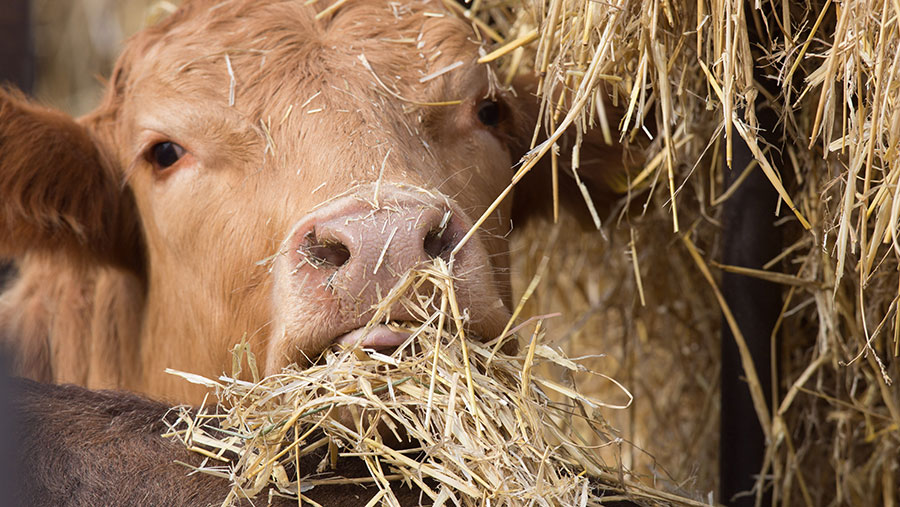Transition Farmer update: Cattle numbers up in Ayrshire
 © Tim Scrivener
© Tim Scrivener Progress has been made towards increasing cattle numbers on beef and arable producer Andrew McFadzean’s Ayrshire farm.
The aim to increase the herd size is a key transition target to help improve the business’ resilience and profitability.
The existing rearer-finisher enterprise of 300-350 continental- and native-crosses is in the process of being expanded to about 450 head.
See also: How a beef-arable farm plans to combat volatile input costs
Mr McFadzean explains that the increase is to improve economies of scale. “It takes me about the same amount of time to feed 300 as it does 450 cattle,” he says.
But the added turnover and potential increase in profit should give the business greater financial resilience.
Improved cashflow
Cashflow could also benefit as larger numbers of cattle will hit peak condition at different times, naturally extending the finishing period.
The purchasing of some of the extra animals began in June, with 42 head bought at market. The plan is to buy more stock at the October suckler calf sales.
Target purchase liveweight is about 280kg – lower than the previous 350kg. Buying lighter at lower prices should provide greater scope to improve margins when the animals are finished after 14-15 months, weighing about 650kg.
Building benefits
Central to the herd expansion is the completion of a 100-stall bedded house to take the additional cattle.
There are just the gates left to hang, and troughs to install and plumb in.
Mr McFadzean says he is glad he took the decision to construct the building before input costs hit current highs.
Although costs had already begun to rise, delaying the decision by a few months would have added another £40,000, he estimates.
Once housed, cattle will be fed a ration of 80% silage, 10% wholecrop and 10% fodder beet. All the forage is grown on farm, helping to protect margins from soaring feed prices.
Arable outlook
Crops are growing well in a year that has seen high rainfall in the later spring months, followed by a period of dry weather. Third-cut silage looks to be a good-quality, leafy crop, says Mr McFadzean.
Winter beans, brought into the rotation to contribute nitrogen and improve soil condition, are also growing well.
The extra nitrogen supplied by the crop will further help to shield the business from volatile fertiliser prices, while the high-quality ration should allow the farm to hit target growth rates of 1.2kg/day.
